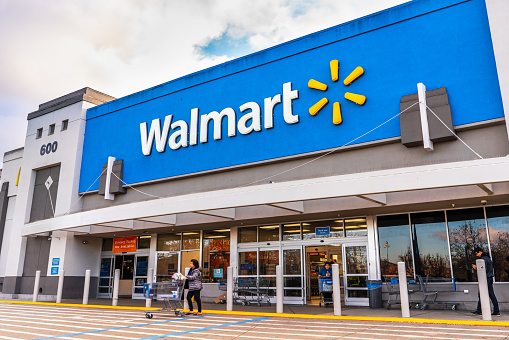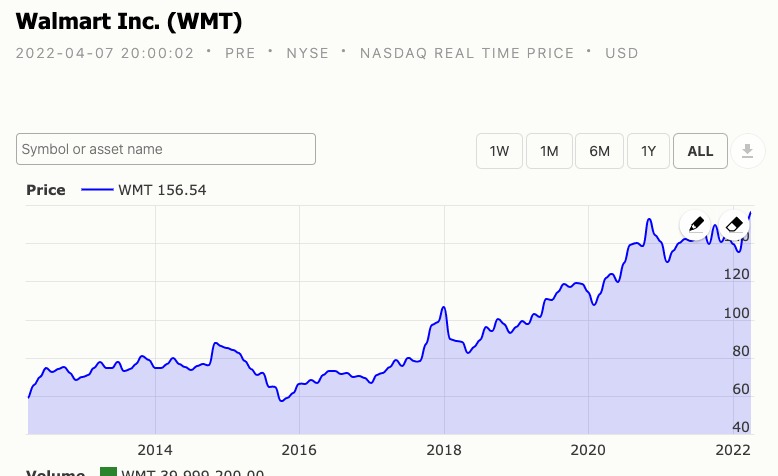Why Walmart Stores are Closing
- Posted on April 07, 2022
- Editors Pick
- By Faith Tiza

Walmart Inc. (previously Wal-Mart Stores, Inc.) is an
American multinational retail firm headquartered in Bentonville, Arkansas, that
operates a chain of hypermarkets (also known as supercenters), cheap department
stores, and grocery stores throughout the United States. Sam Walton launched
the corporation in neighboring Rogers, Arkansas in 1962, and it was
incorporated on October 31, 1969, under the Delaware General Corporation Law.
Sam's Club retail warehouses are also owned and operated by the company.
Walmart Inc. (WMT) is a retailer with a global network
of stores and an e-commerce company. The company is noted for offering a wide
range of things, including home goods, fashion, electronics, food, and more, at
"everyday cheap costs." The corporation has around 10,500 stores and
clubs under 46 brands, as well as e-commerce sites, in 24 countries. It employs
over 2.3 million individuals, the vast majority of whom are based in the United
States.
Traditional shops like Target Corp. (TGT) and
e-commerce companies like Amazon.com Inc. are among Walmart's competitors
(AMZN).
Financial
Statements of Walmart
Walmart released financial figures for the fourth
quarter of its fiscal year (FY) 2022, which ended on January 31, 2022. The
corporation earned $3.6 billion in net income attributable to its shareholders,
a considerable improvement over the $2.1 billion deficit reported the year
before. Year over year, revenue increased by 0.5 percent (YOY). Operating
income increased 7.3 percent year over year to $5.9 billion, which Walmart uses
as a performance metric for its many business units.
Due to the asset sales of various business units,
Walmart's revenue for the quarter was reduced by $10.2 billion. However,
Walmart stores in the United States gained grocery market share, according to
the business. Its e-commerce revenues increased 1% year over year and 70% over
the same three-month period two years prior.

Walmart stock is currently selling for $156.54 as of today, April 8th, 2000, and its market cap is $430 billion.
See here WMT for Walmart's most current stock price.
Segments
of Walmart's Business
Walmart's operations are broken down into three
distinct segments: Walmart U.S., Walmart International, and Sam's Club.
The first two segments reflect Walmart-branded stores
and merchandise in terms of geography, while the third segment represents the
Sam's Club warehouse store.
Walmart only reports segment profits based on
operational income, which is a profit statistic that eliminates numerous
expenses that are included in overall profit, called net income, such as taxes
and interest on loans. As previously stated, Walmart reported $5.9 billion in
operating income for Q4 FY 2022, which includes a $677 million loss attributed
to "corporate and support."
In addition to the three segments listed below,
Walmart reported $1.3 billion in sales for the fourth quarter of the fiscal
year 2022 in the category "membership and other income."
Reasons
behind Walmart closing down some locations
There has recently been word that the massive retailer
is closing/has closed many sites around the country. This is a significant
departure from the company's previous strategy of opening stores every few
weeks.
But why is Walmart suddenly closing shops in 2022? Are
these modifications for the better or worse? This article delves into the real
reasons for the current store closures!
Walmart has over 10,500 stores worldwide, with at
least one in each U.S. state. However, the company just stated that two of its
locations, including one Supercenter, will close soon, while others will close
for various reasons.
The firm recently announced that a Supercenter in
Southwest Louisville, Ky., which opened in 2008, and another in Cincinnati will
be permanently closed due to underperformance, among other reasons.
The major reason is that the store is altering its
business model to appeal to more online buyers. Customers are shopping online
in greater numbers than ever before, which explains why the corporation is
refocusing its efforts in this direction.
Many people question if Walmart is going out of
business after hearing the news, but it's merely a business shift.
The company issued similar statements to WHAS11 in
Louisville and The Cincinnati Enquirer in Cincinnati, saying that they
"are grateful to the customers who have given us the privilege of serving
them" at both locations and that they "look forward to serving them
at our other stores in the surrounding communities and on walmart.com." By
April 22nd, both will be closed.
Following Walmart's reviews, the corporation is
blaming performance issues for the closures of both stores. Walmart plans to
close the "underperforming" Supercenter in southwest Louisville,
according to the Louisville Courier-Journal.
"Our decision is based on several reasons,
including historical and present financial performance, and it is consistent
with the threshold that governs our policy to close underperforming
sites," Little told the publication. Officials told the Cincinnati
Enquirer that the closure was also based on past and current financial
performance.
Despite the two store closures, Walmart is not fully
abandoning the either region. Following the Forest Park closure, the company
announced it will continue to operate 12 stores in the Cincinnati area,
according to the Cincinnati Enquirer. And, according to the Louisville Courier-Journal,
the corporation will continue to employ thousands of people in the Louisville
area and across the state.
After closing some physical stores by April 2022, the
company will invest the money in, among other things, optimizing its website
and app to provide an efficient, high-quality service that matches the
expectations of these new customers.
The retail landscape is shifting as customers want
more online and internet behemoths like Amazon to expand in size and reach.
Walmart is doing everything it can to facilitate this industry transformation
by ensuring that its services are efficient, quick, and dependable!
However, these reasons may not be the only explanation
for the retailer's abrupt move; other possibilities include:
-
Requirements for cleaning and
disinfection: Many people have died as a result
of the seemingly never-ending COVID-19 pandemic over the previous two years.
Many grocery stores, on the other hand, are ensuring that their customers may
shop safely by implementing safety protocols that allow people to buy products
in a safe and healthy environment and most people consider the internet to be a
safe place for trade.
-
Ineffective performance: In
2016, the shop stated that they would concentrate on their new Neighborhood
Market format to compete with similar stores. This smaller variant was created
with convenience in mind and is conveniently situated in your
community. However, rather than expanding its new business, it ended up
closing roughly 130 of the new locations by late 2017 due to unpopularity,
market share loss, and, most importantly, poor performance.
-
A negative image: The
company has a reputation as a retail behemoth, yet its ruthless image is the precise
thing that is preventing them from continuing to succeed. They've had several
brand identity issues in recent years, despite their reputation for low prices,
they also have poor customer service, a lack of personnel training, and the
trouble of navigating an overcrowded store. Quite a lot to turn customers away
from them.
-
A difficulty with supply:
Everyone who has lately visited their store has felt that the merchandise
available is insufficient to meet customer demand. When customers understand they
won't be able to acquire what they need, there's no need for them to keep
shopping here when there are so many other options.
-
Increased tariffs have resulted in a
decrease in profit: In 2018, the United States
imposed new tariffs on products imported from China, requiring the company to
pay a 25% duty on most inbound commodities. Hundreds of businesses around the
country have already suffered as a result of this duty. It sparked questions
about whether the retailer would be able to keep its bargain superstore
reputation.
Despite these cutbacks, Walmart continues to make significant progress in other areas. Because online sales have soared as a result of the pandemic, and more people are receiving groceries delivered than ever before, the firm is doubling down on adding more automated fulfillment facilities to its existing locations. However, orders from outside China may face some delays as COVID-19 spreads across the country, shutting down towns and manufacturing plants.


Be the first to comment!
You must login to comment